Hiroshi Sakaguchi: Barn raising the Japanese way
A Japanese remodel
In 1985, I introduced Hiroshi Sakaguchi, Japanese master carpenter, to Jacques and Denise Tenzel. Jacques and Denise, good friends of mine, wanted a traditional Japanese remodel of their house nestled in the redwoods east of Albion, Mendocino county. The house was taken down to the foundation and re-built by Hiroshi. The finished work can be seen in the first interiors picture on Hiroshi’s website. The project was inspiring and Jacques and Denise became good friends of Hiroshi in the process.
A reclaimed material bonanza
In 1989 Jacques was planning to build a 48’ x 48’ traditional western post and beam barn that he had designed. He had already handpicked all the framing materials from salvage of the Samoa Lumber Mill pier, Humboldt County, which was taken down around 1987. Those timbers were all 12” x 12” old growth redwood up to 26’ long, bought and delivered to Albion for 27 cents a board foot. The balance of the post and beam framing materials were 6” x 16” x 24’ Douglas fir beams from the old school house in Eureka, which were eventually glued together to make 12" x 16" x 24' cross-members. The siding for the barn was 1" x 12" clear old growth redwood boards cut from logs salvaged from the mud of the Navarro river.
Jacques’s friend, John Turner, living further up Albion Ridge, brought over his Wood-Mizer mobile band saw mill and they cut some of the 12” x 12” in half for the 6” x 12” headers, then again for the 6” x 6” posts for along the barn shed walls and then again for the 3” x 3” purlins.
Hiroshi saves the day
With timbers at hand, Jacques was looking for a contractor to do the framing, but the cost was going to be prohibitive. Jacques discussed the dilemma with Hiroshi who was visiting at the time and Hiroshi offered to build a post and beam barn using mortise and tenons and scarf joints in the Japanese joinery tradition.
In July 1989, Hiroshi returned to the site. Jacques taught Hiroshi to drive the Massey-Ferguson tractor to move all the beams around for cutting all the joints, and arranging them in the field ready for the barn raising. Along with the joinery, Hiroshi also made two large wooden mallets out of Laurel wood to be used to pound the joints together in the barn raising. Working at a furious pace, cutting out the entire joinery package, including marking all the joinery ends with his Japanese symbols, took Hiroshi only two weeks.

Hiroshi: chisel in hand


Taking a rest
Let the barn raising begin
After the footings and slab was poured for the barn, Jacques reached out to his friends to take part in the barn raising. A motley, yet enthusiastic crew of loggers, woodworkers, carpenters and others turned out on a drizzly October weekend. Hiroshi lead an inspiring master class in assembling a post and beam structure. We were all in awe of his technical abilities as well as his special brand of Japanese machismo leadership, shimmying up posts, walking across wet beams and swinging the mallet. Even though the loggers were well experienced at moving heavy lumber, Hiroshi made light work of it, along with the help of an A-frame on a 1953 Chevy truck used to raise the heavy 12” x 16” x 24’ beams 18ft in the air.
The barn was raised in two days. The following week Hiroshi, Jacques and Mo finished the roof framing, and the week after the siding was on.
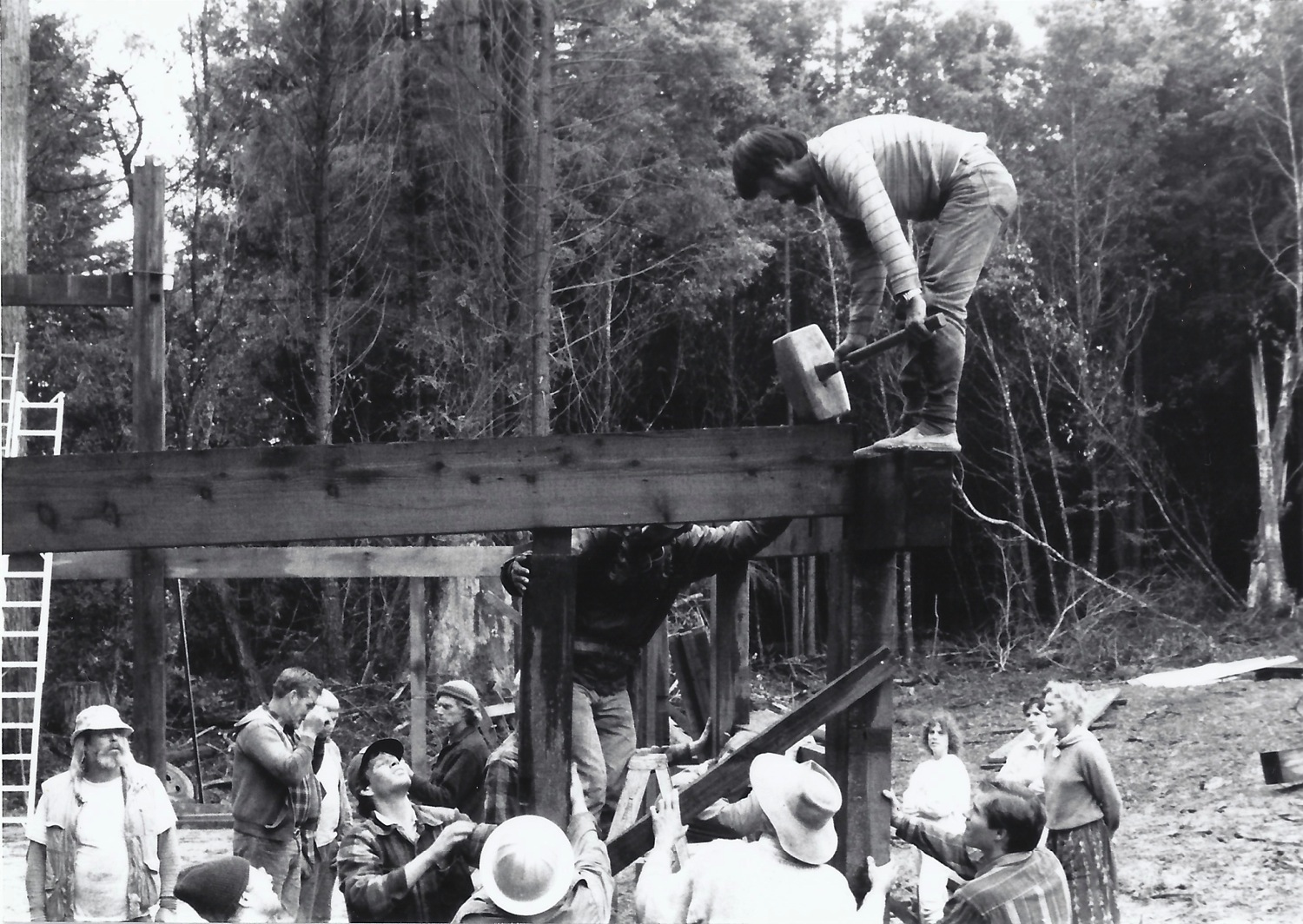
Hiroshi on a beam with the Laurel mallet he made
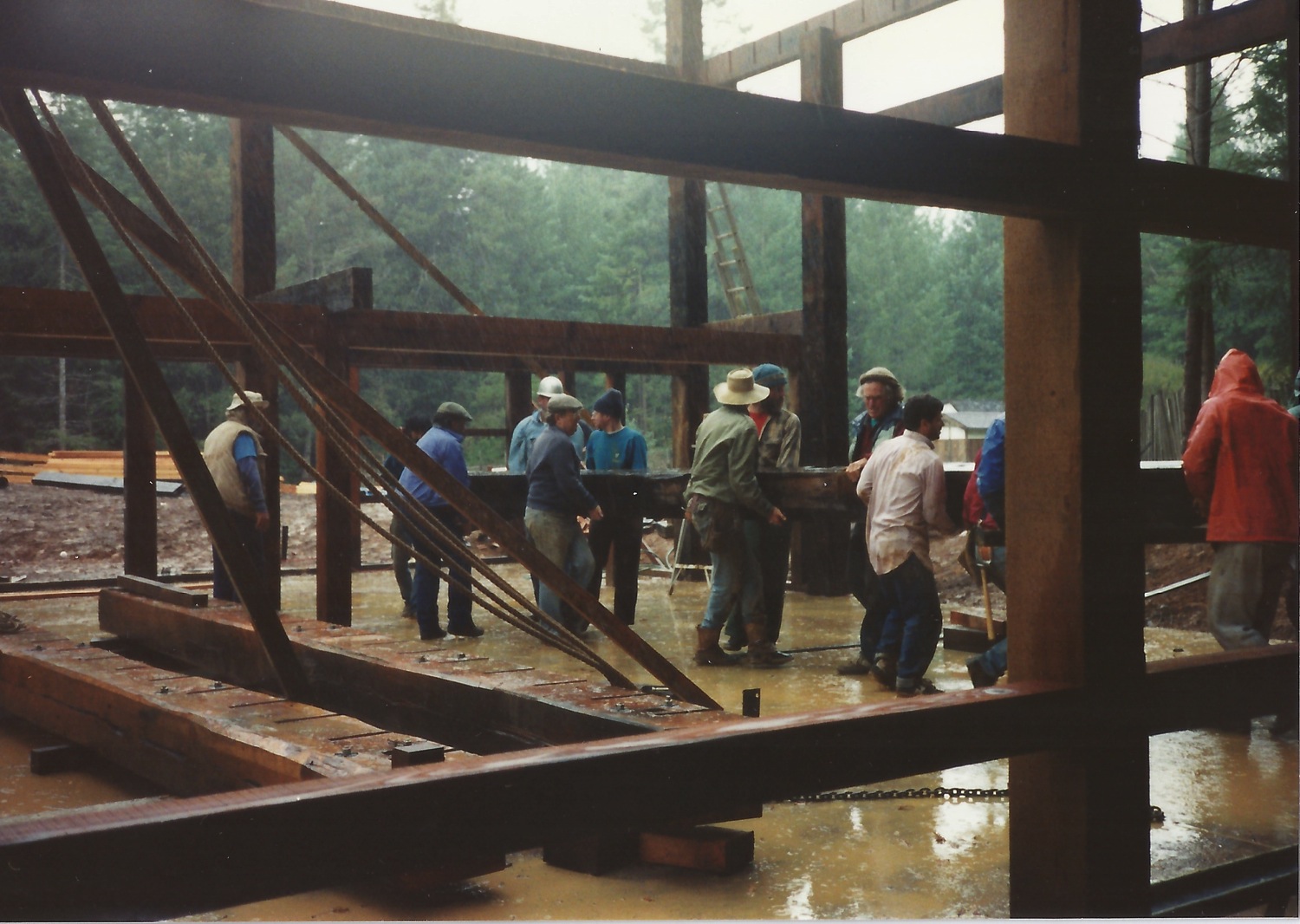
That's me in the white sirt

Raising a post

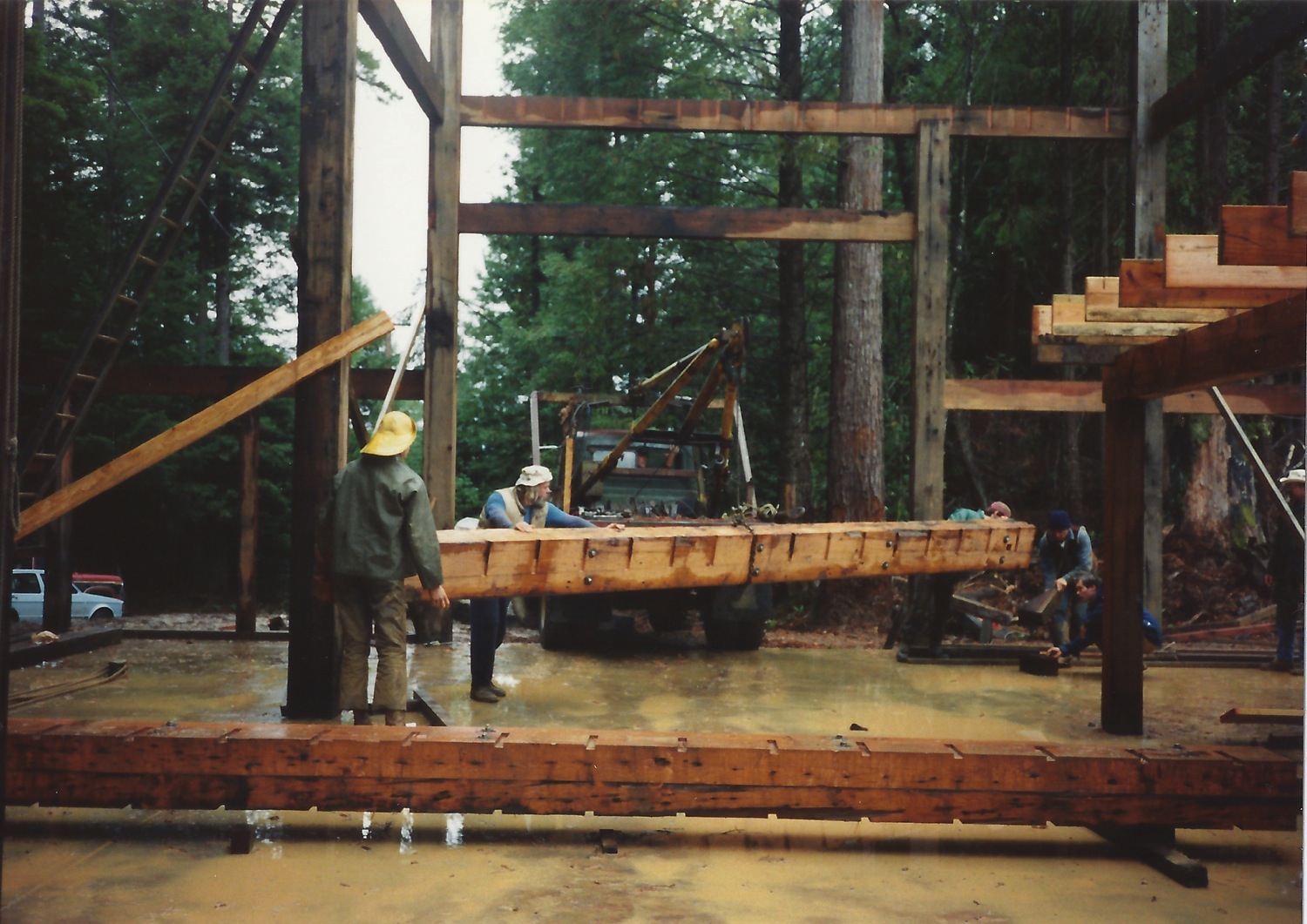
1953 Chevy truck
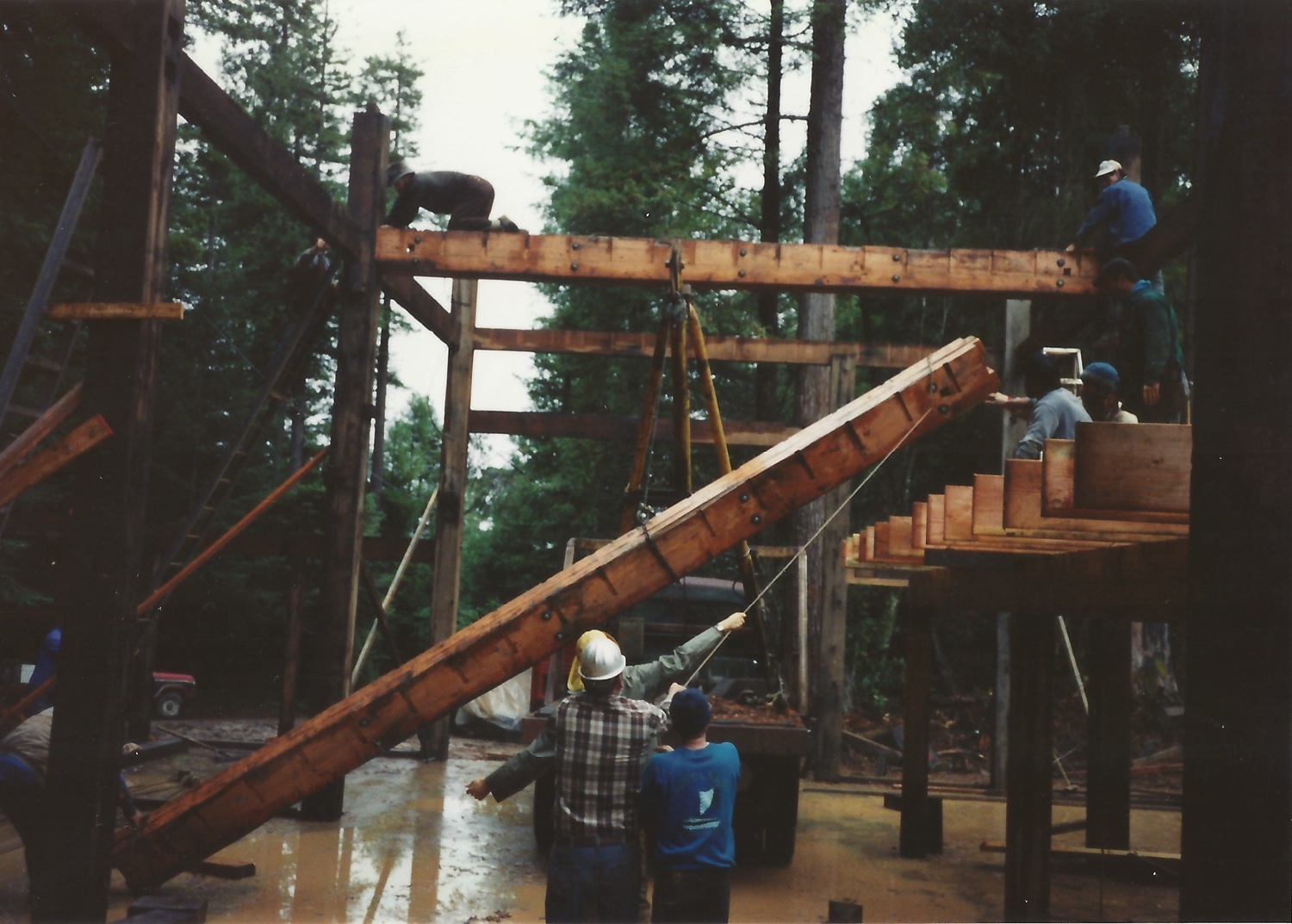
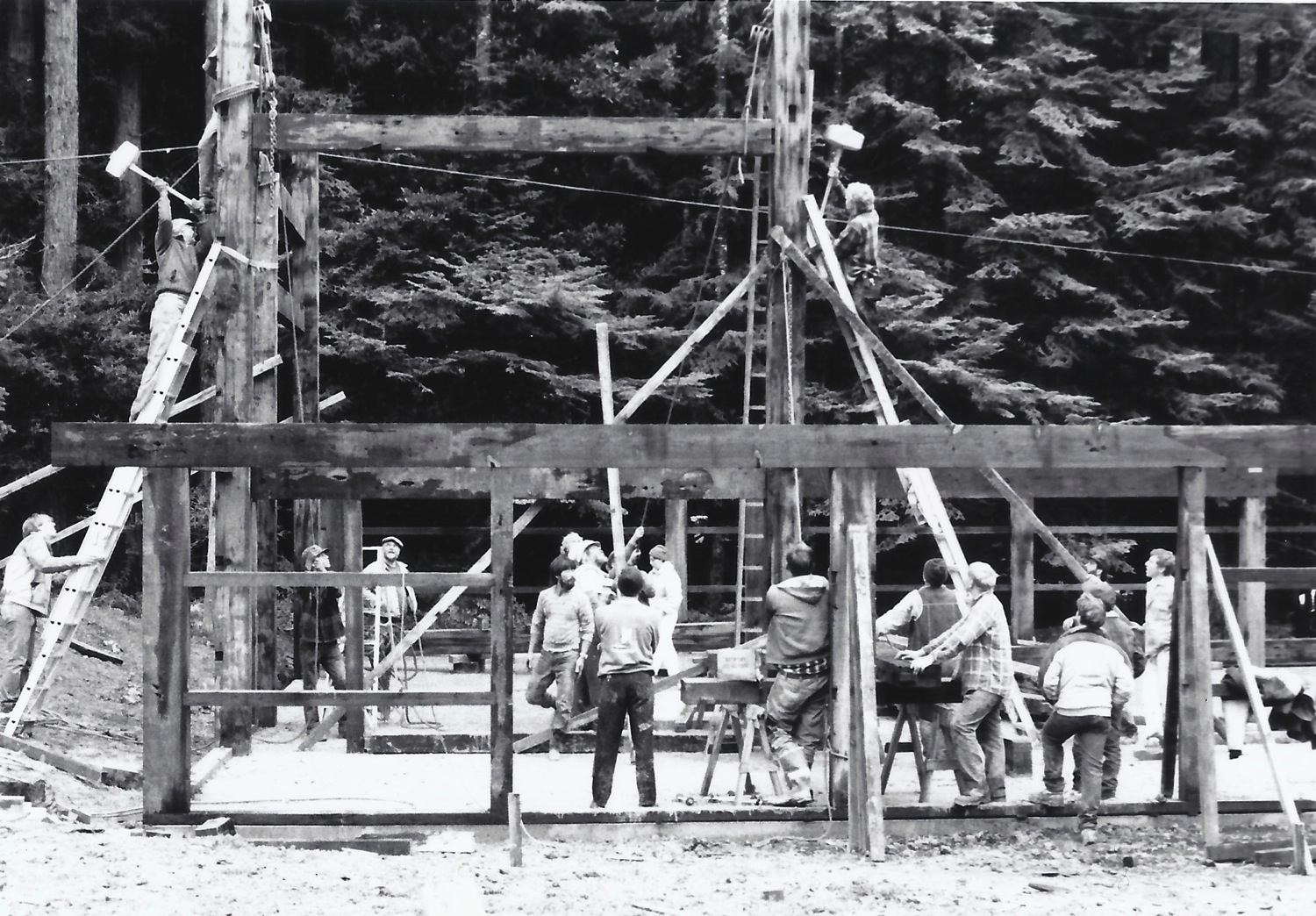
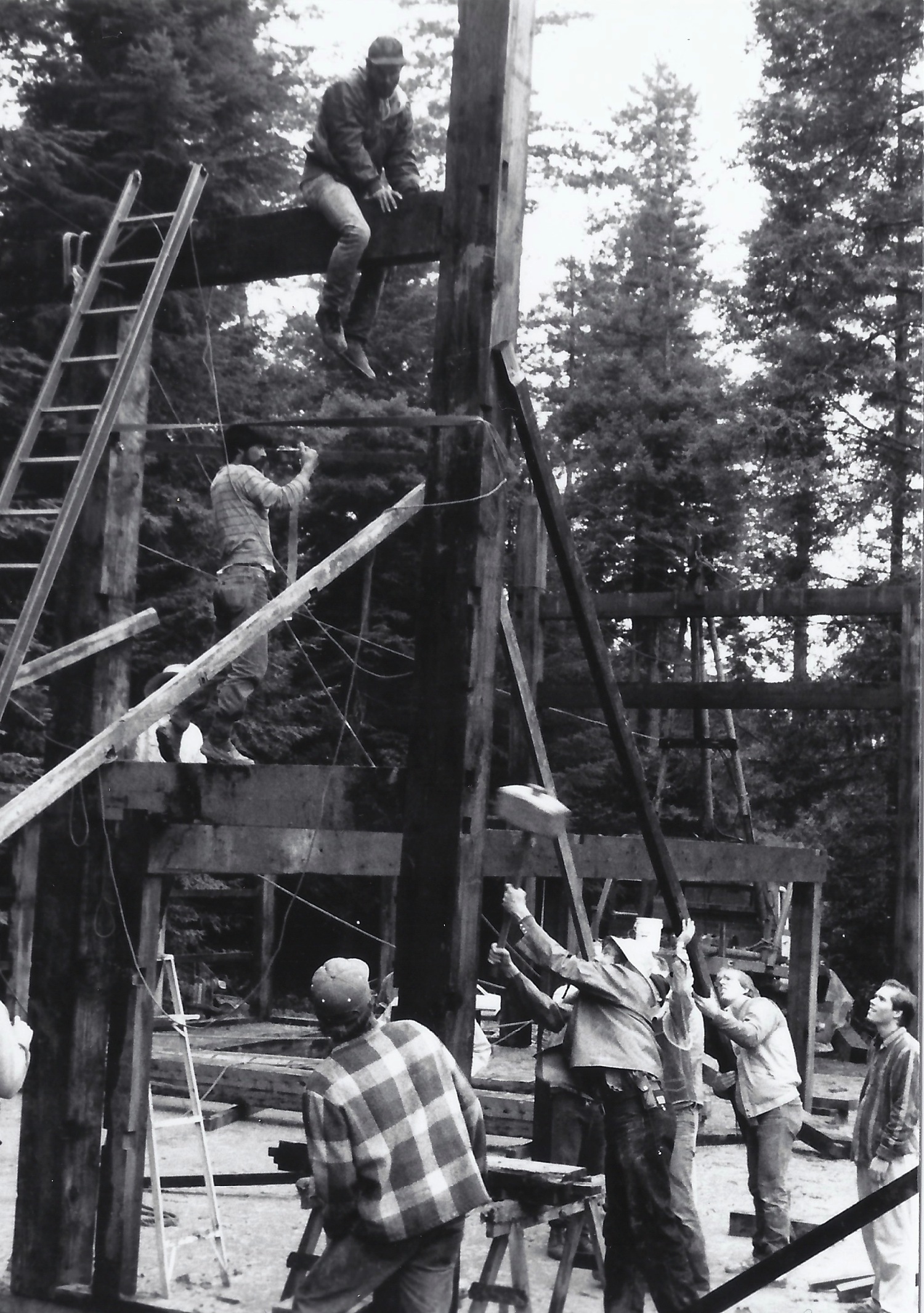
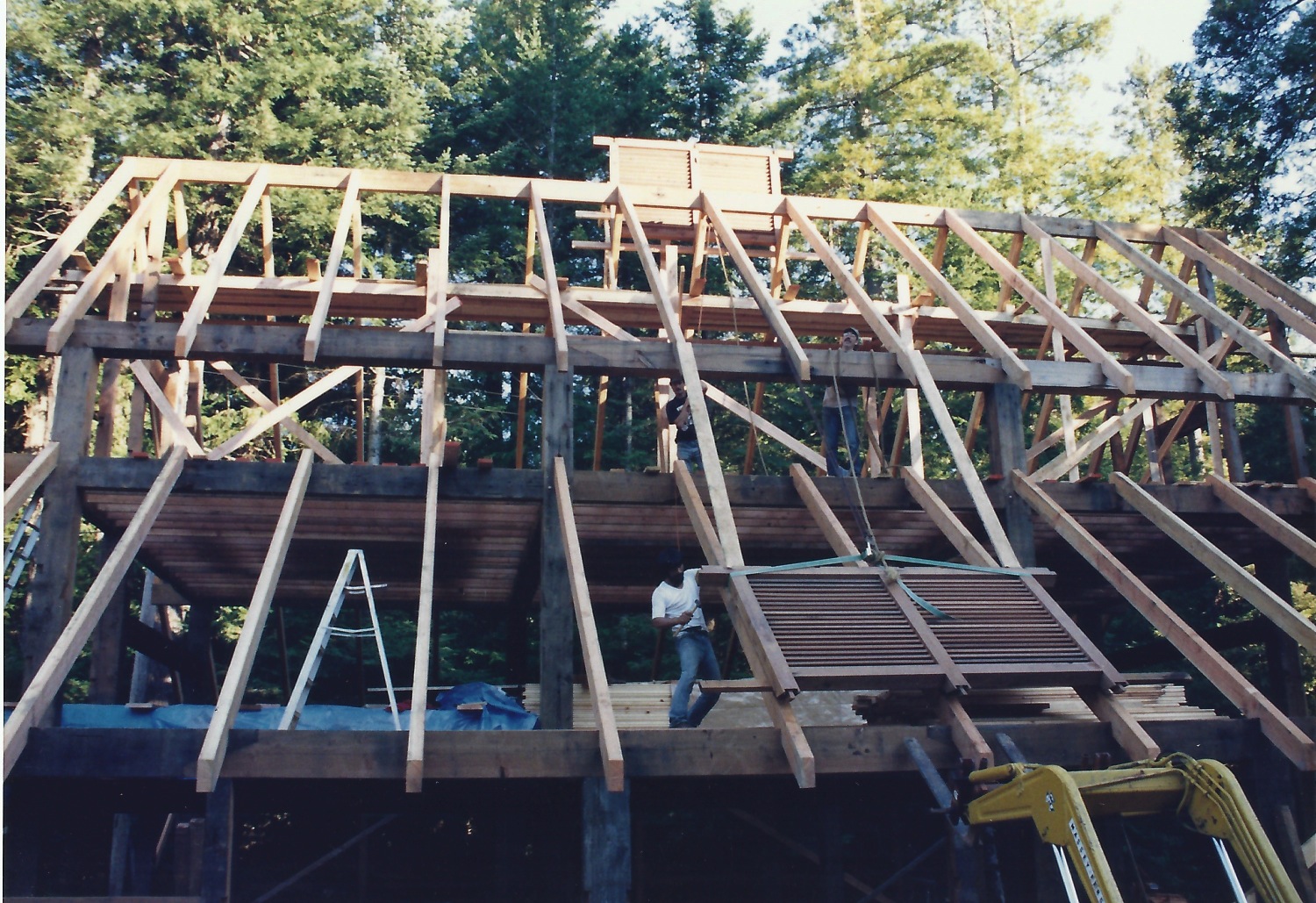
Here is the finished barn
In Spring

In winter with corner of the house remodel showing
A rich history of community building
From Wikipedia: “A barn raising, also historically called a "raising bee" or "rearing" in the U.K., describes a collective action of a community, in which a barn for one of the members is built or rebuilt collectively by members of the community. Barn raising was particularly common in 18th- and 19th-century rural North America.”
For me it was a special occasion and to have been part of two traditions: the European and American tradition of barn raising and the tradition of the high art of Japanese Joinery.
Two books by Azby Brown give more insight into the Japanese traditions. Just Enough: Lessons in Living Green From Traditional Japan shows us that there was also a “house raising” tradition in 18th and 19th century rural Japan, and The Genius of Japanese Carpentry: Secrets of an Ancient Craft will throw light on the Japanese joinery tradition.
